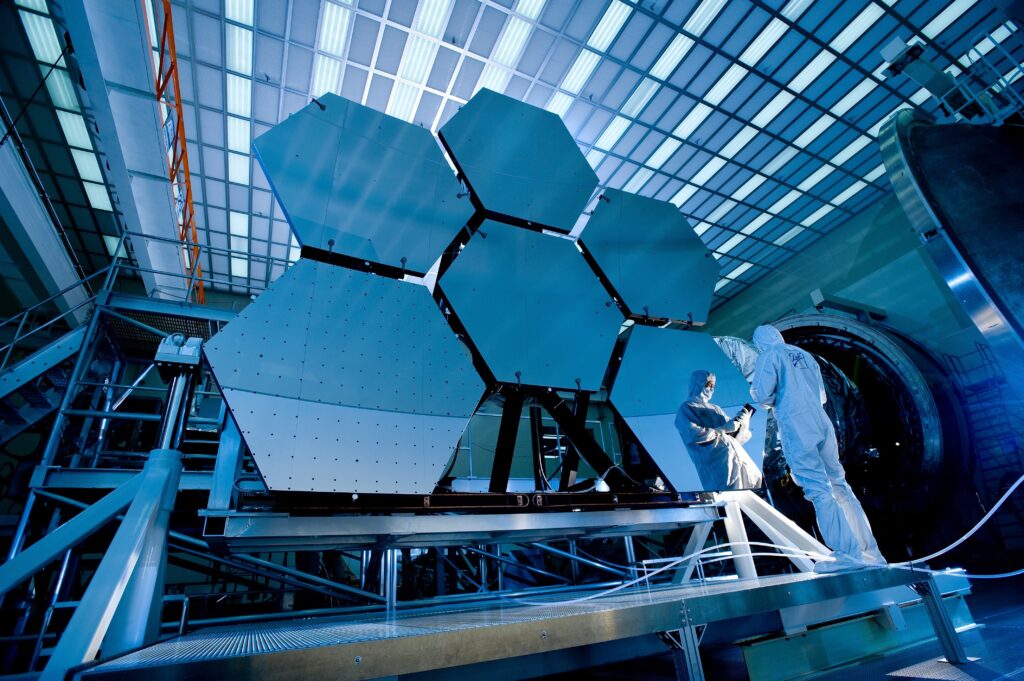Sustainability in rapid prototyping involves more than digital fabrication technology. It leverages CAD software and 3D printing techniques to reduce waste, shorten lead times, and improve results. Discover why modern manufacturing depends on sustainable practices in this comprehensive overview.
Sustainability in rapid prototyping has become paramount as the global community grapples with climate change, resource depletion, and pollution. The growing emphasis on sustainable practices helps reduce the ecological footprint of various industries.
Meanwhile, rapid prototyping is a critical component of modern, sustainable product development. Let’s explore how, why, and what this means for fabricators.
Table of Contents
The Significance of Sustainable Manufacturing
Rapid Prototyping’s Role in Sustainable Manufacturing
Digital Fabrication: A Key Enabler of Sustainability and Customisation
Energy Efficiency and Lean Manufacturing
Innovative Materials and Sustainable Practices
Energy Reduction and Process Optimisation
Sustainable Manufacturing in Action
How Sustainability in Rapid Prototyping Supports Modern Manufacturing
The Significance of Sustainable Manufacturing
A growing awareness of the ecological impact of manufacturing processes marks the 21st century. However, industrial activities contribute greatly to greenhouse gas emissions, resource depletion, and pollution. Transforming how we design, manufacture, and distribute products is crucial to mitigating these adverse effects.

We offer fast, high-quality, tailored PROTOTYPING solutions for leading companies in a wide range of industries.
superior Rapid PROTOTYPING
Manufacturing sustainability is not merely a choice but an environmental imperative. Adopting sustainable fabrication practices can help slow climate change, reduce waste generation, and conserve precious resources. That’s why sustainability in rapid prototyping has become a table talk in the manufacturing industry.
Rapid Prototyping’s Role in Sustainable Manufacturing
Rapid prototyping is an integral part of modern manufacturing and sustainability discussions. It allows companies to iterate and refine product designs quickly and efficiently, reducing time-to-market and operational costs.
Sustainability in rapid prototyping minimizes material waste, enabling components and prototypes with high precision. Traditional manufacturing methods often result in substantial waste, involving subtractive processes and material removal to shape the final product. In contrast, rapid prototyping adds material layer by layer, resulting in minimal waste.
Digital fabrication technologies, including computer numerical control (CNC) machining and 3D printing, facilitate high levels of customization. Customized products can meet specific requirements, reducing resource usage associated with mass-produced, generic goods. Manufacturers can also minimize material consumption and maximize resource efficiency by tailoring products to individual needs.
Rapid prototyping sustainability empowers designers to create products with intricate and lightweight geometries without excessive investment. For instance, complex lattice structures and hollow parts can significantly reduce a product’s weight and material usage. This empowerment lowers the ecological footprint and enhances product performance. It is especially beneficial in industries where lightweight components are crucial, such as aerospace and automotive.
Digital Fabrication: A Key Enabler of Sustainability and Customization
Sustainability in rapid prototyping leverages high-tech digital fabrication techniques, offering substantial advantages in reducing material waste compared to traditional manufacturing methods. The processes can use recycled and sustainable materials, decreasing the ecological impact of prototyping and production. Materials like recycled metals and reclaimed plastics are standard because they help reduce the demand for virgin resources and their energy-intensive extraction processes.
Customization and Efficient Resource Use
Customization is a central tenet of sustainability in rapid prototyping. Digital fabrication technologies facilitate highly customized and precise components, tailoring products to unique specifications without involving additional operational costs or resources. Customized products are often more efficient, longer-lasting, and better suited to their intended purpose.
Rapid prototyping reduces waste and limits unnecessary resource consumption by avoiding generic, one-size-fits-all products. Furthermore, using digital tools such as Computer-Aided Design (CAD) and Computer-Aided Manufacturing (CAM) software enhances the efficiency of modern manufacturing processes. These tools streamline the design-to-production pipeline, optimizing material utilization and reducing the environmental impact without compromising quality.
Energy Efficiency and Lean Manufacturing
Sustainability in rapid prototyping hinges on energy efficiency and lean manufacturing practices. Digital fabrication processes like rapid prototyping and 3D printing often require less energy and produce fewer emissions than traditional fabrication methods. The precision and control provided by digital technologies result in machining or cutting operations that minimize the energy required for manufacturing.
Lean manufacturers can further minimize resource consumption and enhance sustainability by:
- Streamlining production processes
- Reducing lead times
- Eliminating non-value-added activities.
Using digital tools for process optimization, such as data analytics and real-time monitoring, allows for more efficient energy use and reduced downtime. Discuss the options, variables, available resources, and benefits with a rapid prototyping expert.
Innovative Materials and Sustainable Practices
Digital fabrication has ushered in a new era in manufacturing, with sustainability in rapid prototyping quickly becoming a hot topic. Savvy manufacturers are rushing to explore sustainable and eco-friendly materials to minimize their environmental impact.
For instance, the 3D printing industry has developed biodegradable and recycled filaments, reducing the reliance on conventional plastics. By choosing these sustainable materials and testing their efficacy with resource-conscious tools like rapid prototyping, manufacturers can contribute to environmental conservation and industry innovation.
Material reusability is another significant sustainability factor. Leftover materials from previous projects can often be repurposed, reducing unwanted surplus and minimizing the need for additional raw materials. Adopting closed-loop systems, where post-industrial waste is collected and recycled, further diminishes landfills and reduces the demand for raw consumables.
Energy Reduction and Process Optimization
Manufacturers should invest in energy-efficient machinery and process optimization to enhance sustainability in rapid prototyping and digital fabrication. Sustainability in rapid prototyping includes leveraging energy-efficient CNC machines, 3D printers, and laser cutters that consume less electricity while maintaining high productivity. Process optimization techniques like cycle time reduction and material flow analysis can help.
Furthermore, the concept of lights-out manufacturing is gaining momentum. In lights-out manufacturing, digital fabrication processes are automated and require minimal human intervention. This technique reduces energy consumption, labor costs, and the risk of errors in the manufacturing process. Integrating sensors and data analytics in digital fabrication equipment allows for real-time monitoring and control, optimizing energy use and minimizing downtime.
Sustainability in rapid prototyping, 3D printing, and other techniques extends beyond the initial production process. Moreover, the eco-friendly practices of designing for disassembly and reuse are becoming more prevalent. By making products and components easy to disassemble, modern manufacturers can extend the life of their equipment. They can also reduce the need for new materials and energy-intensive production techniques.
Sustainable Manufacturing in Action
Sustainability in rapid prototyping requires due diligence and manufacturing mentorship to stay ahead of the curve. Watching other industries leverage digital fabrication technologies to mitigate consumption and emissions is commendable. However, today’s most competitive manufacturers also study their processes and outcomes.
The automotive industry is a compelling example of how digital fabrication can foster sustainability in manufacturing. Today’s automakers garner digital fabrication technologies to optimize their processes and reduce their environmental footprint. Here’s how:
- Lightweighting: Automakers employ digital fabrication technologies to create lightweight structures to improve fuel efficiency and reduce emissions. Components like engine mounts, brackets, and brackets have intricate lattice structures that maintain structural integrity while minimizing material usage.
- Material Efficiency: The use of digital fabrication processes allows for efficient material procurement. Sheet metal components, for example, are fabricated with minimal waste through advanced CNC machining and laser cutting techniques.
- Customization: The automotive industry is moving towards customization to meet individual customer preferences. Using digital fabrication, custom features and designs can be incorporated into vehicles, reducing the need to mass-produce standardized parts.
- Recycling: Automotive manufacturers also embrace recycled materials in rapid prototyping, 3D printing, and other digital fabrication processes. Recycled plastics, for instance, can create various car components, including interior trim and structural features.
Meanwhile, digital fabrication technologies revolutionize building design and architecture. Sustainable building practices are essential to address environmental concerns, and sustainability in rapid prototyping is pivotal in achieving these goals. Here’s why:
- Resource Efficiency: Materials such as recycled concrete, reclaimed wood, and sustainable composites are essential in digital fabrication. These materials help conserve natural resources and reduce the carbon footprint of construction projects.
- Design Optimization: Rapid prototyping lets architects create innovative and environmentally responsive designs. Components like shading devices, ventilation systems, and energy-efficient structural elements can be customized and integrated into the design, enhancing the overall sustainability of a building.
- On-Site Production: In some cases, digital fabrication technologies can be helpful on-site, reducing the need for extensive transportation of building components. This localized production approach enhances supply chain efficiency and minimizes construction’s carbon footprint.
How Sustainability in Rapid Prototyping Supports Modern Manufacturing
Rapid prototyping is a revolutionary technology that supports sustainable manufacturing practices. This innovative product development and manufacturing approach has several key aspects contributing to sustainability, corporate growth, and industrial innovation.
Traditional manufacturing often results in substantial material losses due to the need for molds, excess raw materials, and extensive machining. In contrast, rapid prototyping helps eliminate errors and iterate designs before live production. Also, 3D printing builds objects layer by layer, utilizing only the required material, thereby reducing waste and conserving resources.
Further, rapid prototyping’s decentralized nature can lead to fewer transportation-related emissions. Traditional manufacturing typically involves long and complex supply chains, necessitating the movement of components and products across vast distances. However, rapid prototyping and 3D printing reduce transportation needs and carbon emissions by creating products closer to their point of use.
Sustainability in rapid prototyping enables greener design practices. Engineers and designers can experiment with intricate geometries and lightweight structures, reducing the overall material consumption of new or experimental products. This approach can lead to enhanced energy efficiency, reduced product weight, and optimized performance, all essential components of sustainability and market relevance.
Digital fabrication technologies empower sustainable manufacturing through reduced material waste, shorter supply chains, and innovative, eco-friendly designs. As this technology continues to evolve, it promises to play a crucial role in advancing environmentally responsible production processes.
Challenges and Limitations
While sustainability in rapid prototyping offers numerous advantages, acknowledging the challenges and limitations associated with this technology is essential. Here is what you need to know:
- Material Limitations: Although rapid prototyping can use a wide range of materials, including metals, plastics, and ceramics, some applications still require materials challenging to 3D print, limiting their utility in some industries.
- Speed and Scalability: Rapid prototyping is not always suitable for mass production due to its relatively slow production speeds. This limitation makes it ideal for customized, low-to-medium-volume production.
- Post-Processing Requirements: Depending on the specific technology used, 3D-printed objects may require post-processing steps, such as polishing, painting, or assembly, which can negate some sustainability benefits.
- Energy Sources: The sustainability of rapid prototyping depends on the energy sources used. If the electricity for 3D printing comes from fossil fuels, it can contribute to carbon emissions.
- E-Waste: Rapid prototyping also raises concerns about electronic waste. As technology evolves and older machines become obsolete, there is a potential for electronic waste that needs sustainable management.
Conclusion
Sustainability in rapid prototyping is not just an option; it’s a fundamental shift in how manufacturing and product development integrate with the rest of the world. Digital fabrication plays a vital role in driving sustainability in modern manufacturing. However, integrating sustainable manufacturing practices becomes paramount as the world faces the critical challenges of climate change and resource scarcity.
Companies that embrace digital fabrication and other sustainable technologies align with ethical and environmental imperatives and position themselves for long-term success in a world that increasingly values eco-conscious and resource-efficient solutions.
The marriage of rapid prototyping and sustainability is poised to reshape the future of manufacturing in a manner that is more responsible and environmentally conscious. Discuss your current position and plans for the future with an expert on sustainability in rapid prototyping.
 About the Author
About the Author
James Murphy is the founder and CEO of HLH Rapid – a hybrid CNC machine shop fusing Western service and quality with Eurasian industry influences for over 14 years. His advanced enterprise uncovers cost-effective rapid injection molding techniques to remain unmatched by industry competitors. Murphy’s full-service fabrication and manufacturing methods span six dedicated zones, from 3D printing and vacuum casting to sheet metal prototyping and project management. His expertise also includes high-efficiency machining within strict yet volatile markets.
Murphy earned an MBA after becoming inspired by his father’s hands-on craftsmanship. As a budding entrepreneur, he taught English and studied Chinese to pursue pioneering objectives. His groundbreaking approach helps build the future by providing well-rounded manufacturing services to innovative Western businesses. When he’s not offering upscale RP and CNC, James enjoys art-house movies, Thai boxing, and spending time with his growing family.
Visit HLHRapid.com for an instant quote on rapid prototyping services.


